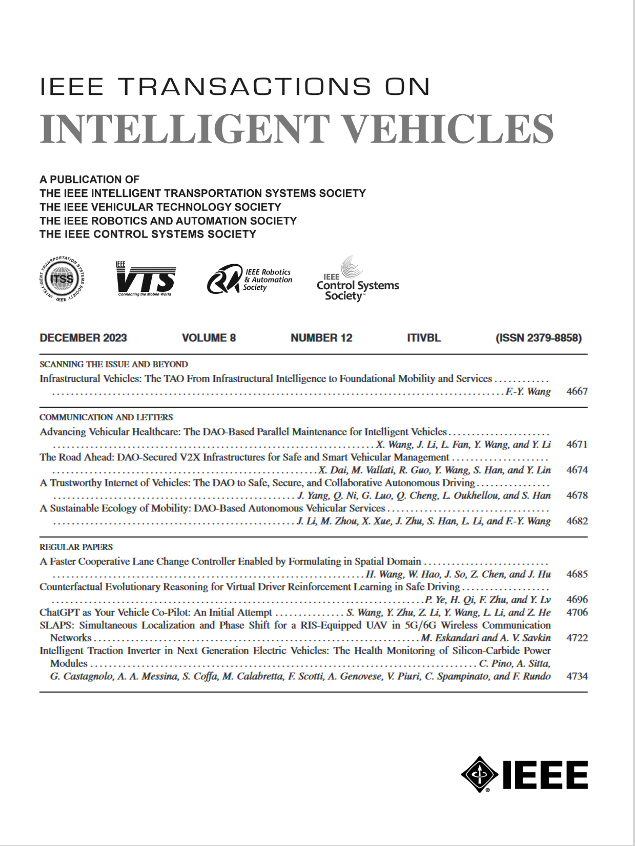The Integration of Prediction and Planning in Deep Learning Automated Driving Systems: A Review
IF 14.3
1区 工程技术
Q1 COMPUTER SCIENCE, ARTIFICIAL INTELLIGENCE
引用次数: 0
Abstract
Automated driving has the potential to revolutionize personal, public, and freight mobility. Beside accurately perceiving the environment, automated vehicles must plan a safe, comfortable, and efficient motion trajectory. To promote safety and progress, many works rely on modules that predict the future motion of surrounding traffic. Modular automated driving systems commonly handle prediction and planning as sequential, separate tasks. While this accounts for the influence of surrounding traffic on the ego vehicle, it fails to anticipate the reactions of traffic participants to the ego vehicle's behavior. Recent methods increasingly integrate prediction and planning in a joint or interdependent step to model bidirectional interactions. To date, a comprehensive overview of different integration principles is lacking. We systematically review state-of-the-art deep learning-based planning systems, and focus on how they integrate prediction. Different facets of the integration ranging from system architecture to high-level behavioral aspects are considered and related to each other. Moreover, we discuss the implications, strengths, and limitations of different integration principles. By pointing out research gaps, describing relevant future challenges, and highlighting trends in the research field, we identify promising directions for future research.深度学习自动驾驶系统中预测与规划的集成研究综述
自动驾驶有可能彻底改变个人、公共和货运的出行方式。除了准确感知环境外,自动驾驶汽车还必须规划安全、舒适、高效的运动轨迹。为了促进安全和进步,许多工程都依赖于预测周围交通未来运动的模块。模块化自动驾驶系统通常将预测和规划作为连续的、独立的任务来处理。虽然这解释了周围交通对自我车辆的影响,但它无法预测交通参与者对自我车辆行为的反应。最近的方法越来越多地将预测和计划结合在一个联合或相互依赖的步骤中,以模拟双向相互作用。到目前为止,还缺乏对不同集成原则的全面概述。我们系统地回顾了最先进的基于深度学习的规划系统,并关注它们如何整合预测。集成的不同方面(从系统架构到高级行为方面)被考虑并相互关联。此外,我们还讨论了不同集成原则的含义、优势和局限性。通过指出研究差距,描述相关的未来挑战,并强调研究领域的趋势,我们确定了未来研究的有希望的方向。
本文章由计算机程序翻译,如有差异,请以英文原文为准。
求助全文
约1分钟内获得全文
求助全文
来源期刊

IEEE Transactions on Intelligent Vehicles
Mathematics-Control and Optimization
CiteScore
12.10
自引率
13.40%
发文量
177
期刊介绍:
The IEEE Transactions on Intelligent Vehicles (T-IV) is a premier platform for publishing peer-reviewed articles that present innovative research concepts, application results, significant theoretical findings, and application case studies in the field of intelligent vehicles. With a particular emphasis on automated vehicles within roadway environments, T-IV aims to raise awareness of pressing research and application challenges.
Our focus is on providing critical information to the intelligent vehicle community, serving as a dissemination vehicle for IEEE ITS Society members and others interested in learning about the state-of-the-art developments and progress in research and applications related to intelligent vehicles. Join us in advancing knowledge and innovation in this dynamic field.
 求助内容:
求助内容: 应助结果提醒方式:
应助结果提醒方式:


